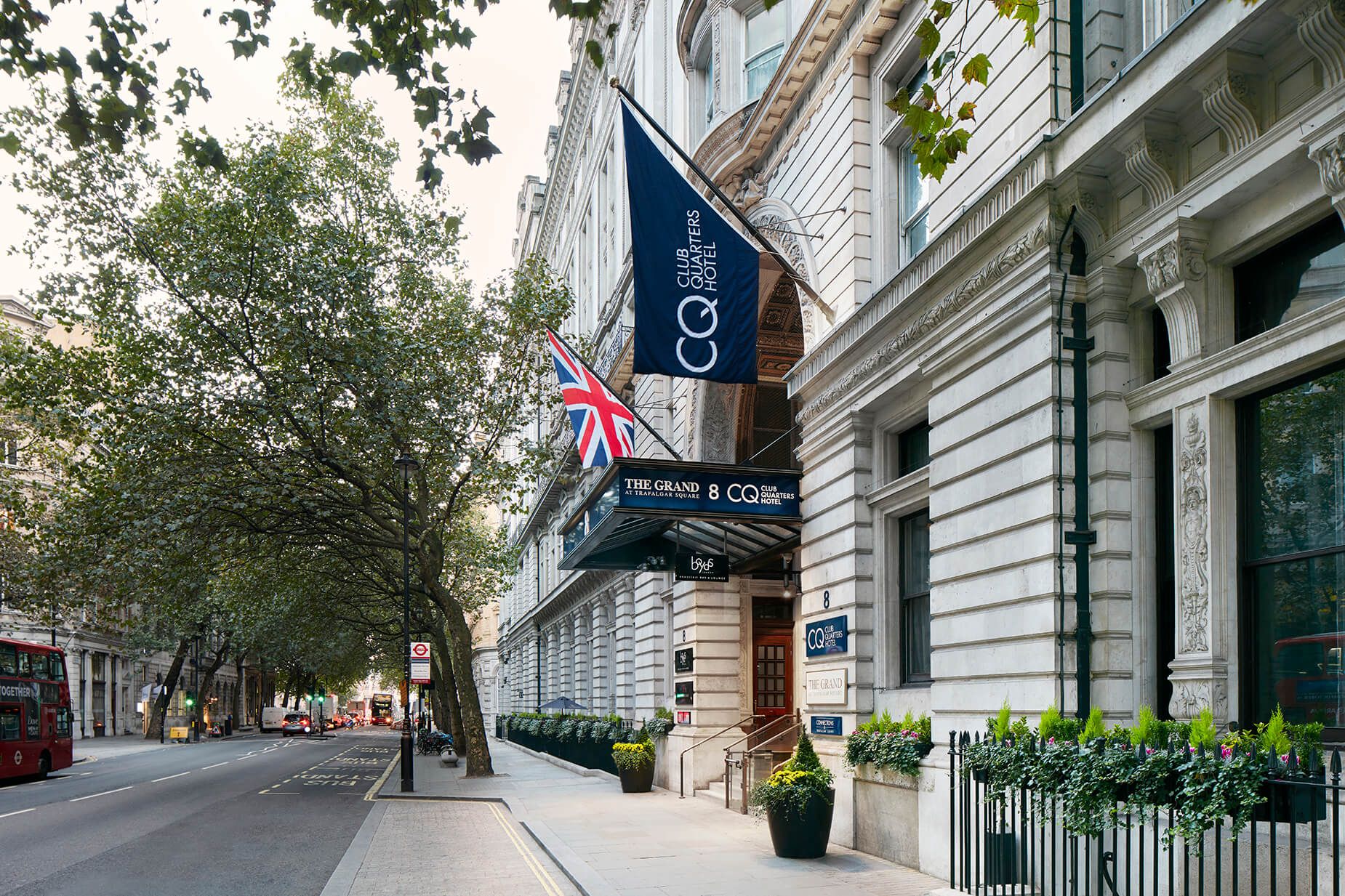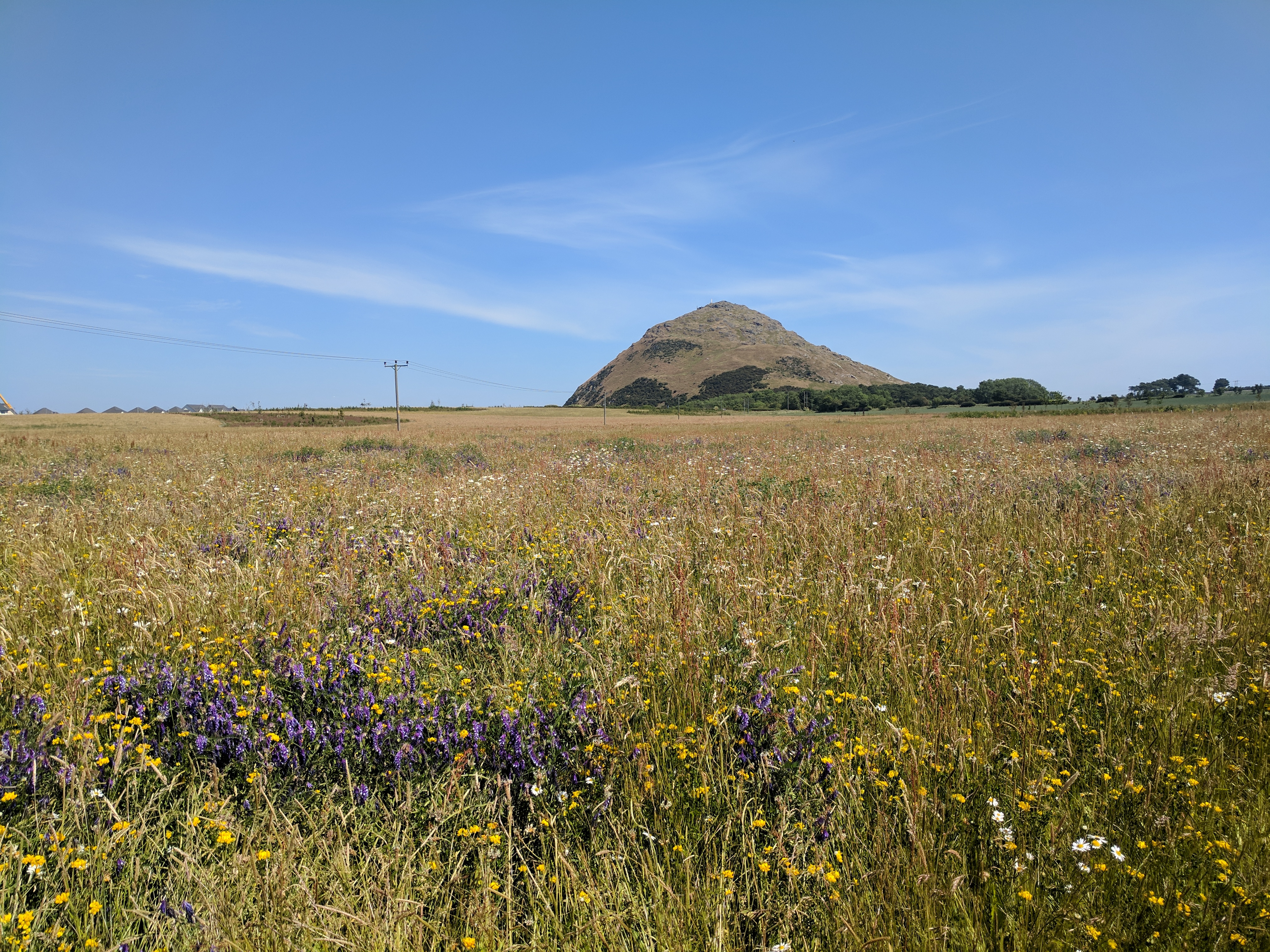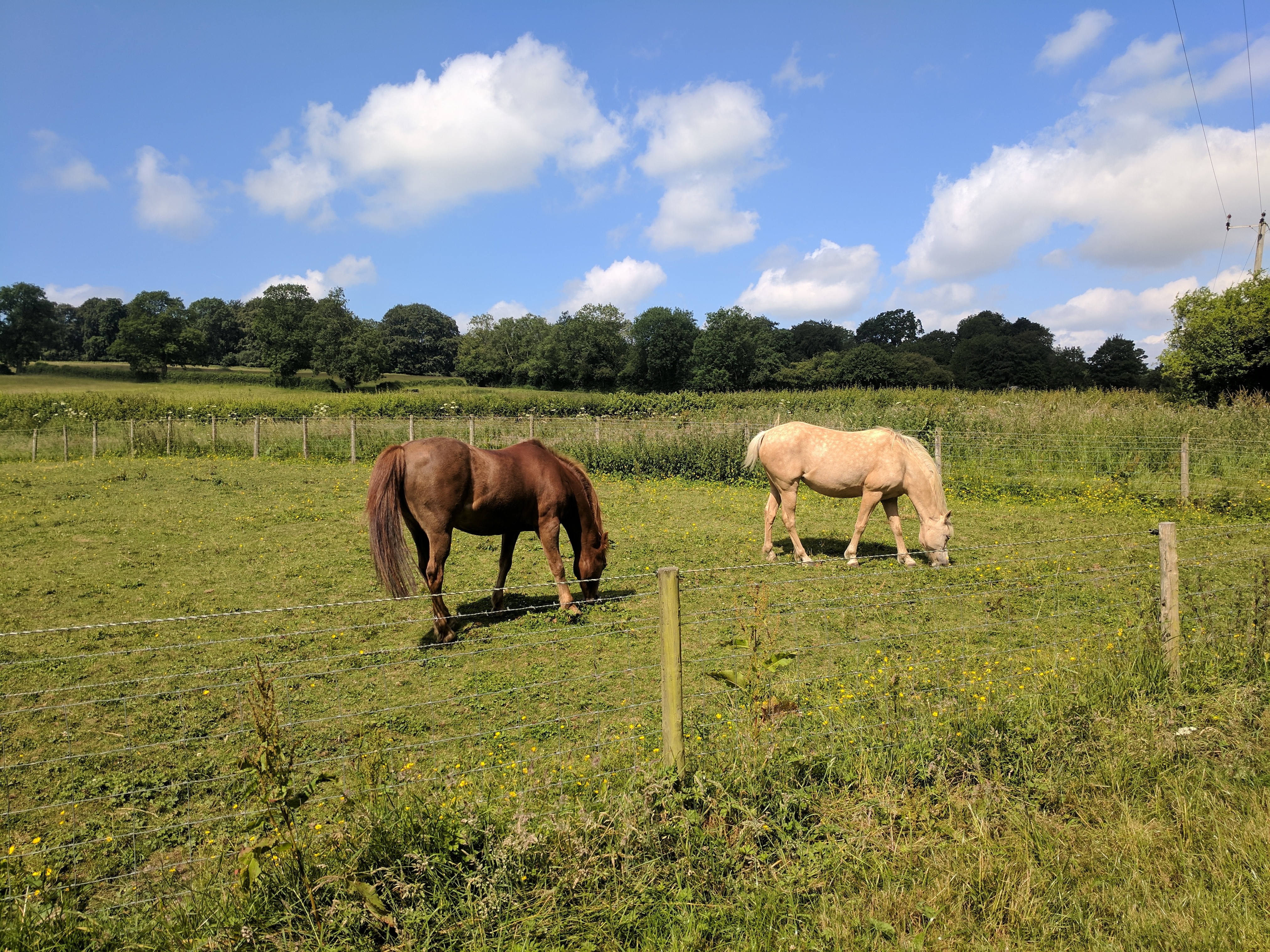After our illuminating trip through the world of the Royal Society, we were ready for lunch. We chose the restaurant located on the ground floor of the Grand Hotel, within sight (“a mere 77 paces”) of Trafalgar Square. Built in the 1880s, it was once the Hotel Victoria. Seven floors, five hundred rooms, electric lights…and four bathrooms (it was the 1880s, after all.) Its ballroom was one of the biggest in London, and an elegant billiard room filled the basement. It all ended with World War II. In 1940, the Ministry of Defense took over the hotel, and it became one of the many nerve centers of the British war effort. Primitive computers filled what was once the restaurant. The ballroom became a lecture hall, where military experts and intelligence officers briefed civil defense workers. After the war, the old Hotel Victoria was a musty shell of its former self, still owned by the government but underused and in bad shape. After finally being sold, it returned to the hospitality business in 2010, reopening as the Grand at Trafalgar Square.

The Grand’s restaurant, known as Boyds Grill & Wine Bar, was lit by vintage chandeliers from 1914, and the original marble and onyx walls were once again in evidence, having been covered over during the war years. After a starting course of duck wings, Shannon had the sea trout, I had the cottage pie, and Cam had their “hot dog of the week,” which I regretted not getting myself. We don’t keep hot dogs in the house because they’re fundamentally disgusting — the processed-scrap, bottom-feeders of the lunch meat world, not even fit to be categorized as a “sausage.”

Yes, they serve hot dogs.
But goddamn, do I love a grilled hot dog. I once made a vow to myself to never turn down the opportunity to have a hot dog outside of the house, be it a ballgame, barbecue, or gourmet restaurant. I broke that vow today, and was a little remorseful as I saw Cam devour his southwestern-themed dog, covered in cheese and hot sauce. The cottage pie was fine, though.

After lunch, Cam and I were the only ones really interested in seeing the Churchill War Rooms. Shan and her parents hopped a bus to head back to the Airbnb for an afternoon of rest and reading. We would meet again that evening in London’s East End for another walking tour, this time dedicated to the crimes of Jack the Ripper. Cam and I struck out on foot towards Whitehall.
We turned southwest at Trafalgar Square, passed under the 1912 structure known as the Admiralty Arch and began walking down the Mall, which, if we followed it all the way, would lead us to Buckingham Palace. We turned left on Horse Guards Road instead, heading towards the Churchill War Rooms, and found ourselves in the sector of London known as Whitehall.

The Admiralty Arch, gateway to Whitehall
Whitehall was named for Whitehall Palace, which once occupied this entire area. The old Palace of Westminster, since 1049 the seat of the English monarchy, was viewed with increasing royal disfavor by the early Tudor era. With its cold medieval feel and immense echoing hall, Westminster Palace was an outdated relic. It was being used more and more for meetings of Parliament, anyway. A hundred yards downriver was York House, owned by Henry VIII’s discredited advisor Cardinal Wolsey. Once Wolsey had fallen from favor in 1530, Henry swiped the mansion for himself, renamed it White Hall, and turned it into a rambling, 1500-room edifice with luxurious private apartments for both king and whoever his queen happened to be at the moment. No more would the king’s court live and work communally in a drafty, stone-floored “great hall.” Now there would be smaller, plusher rooms. The king would meet people in a “presence chamber.” Business would be conducted mostly behind closed doors.

Whitehall Palace. The Banqueting Hall is on the left.
The era of Whitehall Palace came to an end in 1698, with its near-total destruction by fire. The official royal household moved on to St. James’s Palace. The only structure of Whitehall left to see today is its Banqueting House.

The Banqueting House today.
The street called Whitehall is now home to most of the administrative offices of the British government. The home and offices of the Prime Minister, Downing Street, is a side street off of Whitehall. The term “Whitehall” is often used as shorthand for the entire British government (or at least its foreign policy arm), much as “Wall Street” represents the American financial world.
Underneath the Treasury Building, not far from Downing Street, is a set of bomb-proof basement rooms from which World War II Prime Minister Winston Churchill directed the course of Britain’s role in the conflict. In various forms, these subterranean bunkers, including a Cabinet Room and a Map Room, have been open to the public since 1984. After an expansion to include Churchill’s private quarters and a major 2005 remodel, the Churchill War Rooms (now operating under the auspices of the Imperial War Museum) saw a surge in popularity. So much so that when Cam and I approached them, our hearts sank to see the size of the line. Near the beginning of the line, an official-looking portly gentleman in a vest and holding a shade umbrella kept repeating the mantra of “Two-hour wait at this point, ladies and gentlemen, two-hour wait. Two-hour wait at this point, ladies and gentlemen, two-hour wait…”
We bailed, and decided on the spur of the moment to make the obligatory Beatles fan pilgrimage to Abbey Road in the upscale neighborhood of St. John’s Wood.
The abbey the road was named for was the Kilburn Priory, a small community of nuns that existed from 1134 to 1536, nothing of which remains except some chunks of masonry and an old well.
Behind its graffiti-covered outer walls, the front of Abbey Road Studios looks like the 1831 Georgian townhouse it once was. When the Gramophone Company acquired the property in 1929, it built its recording facility on top of what was once a very extensive back garden. The townhouse facade has always been used as administrative offices only. The Gramophone Company merged with a few others to form Electric and Musical Industries, Ltd. (EMI).

One of EMI’s subsidiary record labels, Parlophone, signed a promising young band from Liverpool in the summer of 1962, and they spent almost all of their remarkable recording career within the confines of what was then called simply “EMI Recording Studios.” The facility has three recording spaces — massive Studio One, designed for large orchestras, mid-sized Studio Two, and the little Studio Three. The Beatles made use of all of them at one point or another, but their home base was Studio Two. The early puppy-love singles which rocketed them to fame, the twin masterpieces Rubber Soul and Revolver, the psychedelic epic Sgt Pepper’s Lonely Hearts Club Band, the fragmented but no-less-epic The Beatles (“White Album”), and almost everything else — all cooked up in that one building, mostly in that one room.

Going over the Hard Day’s Night screenplay while recording “And I Love Her,” Studio Two, February 1964.

Studio Two, Abbey Road.
Their Get Back project, an attempt to perform a live concert of all-new material in January 1969, did not go well. Internal tension between the band members, and collective boredom with the whole Beatles thing, was at its height*. The desultory run-throughs of the new songs were shot by a documentary crew (at Twickenham Film Studios) and the songs were duly put on tape under the supervision of Glyn Johns (at their self-owned Apple Studios, not at Abbey Road). The “concert” ended up being a brief lunch-hour performance from the roof of their Apple office on Savile Row. Iconic as it is now, the rooftop show seemed anti-climactic back then. Apart from the title single which came out that spring, the Get Back project was temporarily shelved.
There actually wasn’t a clear division between the end of the Get Back sessions and the beginning of what came to be Abbey Road. As late as April 1969, they recorded things like “Oh! Darling” and “Something” under the impression they were for the completion of the earlier project. When it became clear the Get Back project was a fizzle (for now), the Beatles decided put their differences aside, summon their long-time producer George Martin, and craft one more well-polished studio gem as a proper cap to their career. Over the summer of ‘69, the walls of Studio Two were witness to the creation of “Come Together,” “Octopus’s Garden,” “Here Comes The Sun,” “Golden Slumbers,” “Because,” and several others that formed the sonic tapestry of their final project**, including the aptly titled “The End.” The resulting album is a lot of people’s favorite — it’s filled with good energy, more close three-part harmonies than any of their recordings in years, and tinged with the perfect amount of elegiac, end-of-the-ride sadness. (Despite this, the ever-mercurial Beatles did briefly entertain plans for a follow-up album, with a democratic track listing of four Lennon songs, four McCartney songs, four Harrison songs — and two for Ringo if he wanted — but business/managerial disputes sunk the idea, and ultimately the band.)
Continue reading →










 I co-founded the
I co-founded the  We went from friends, happy to find common ground in something like 02’s
We went from friends, happy to find common ground in something like 02’s  Membership expanded and became fluid — different members have come and gone over the years (including myself, as we’ll see), but it always seems to hover around ten.
Membership expanded and became fluid — different members have come and gone over the years (including myself, as we’ll see), but it always seems to hover around ten. 











































































